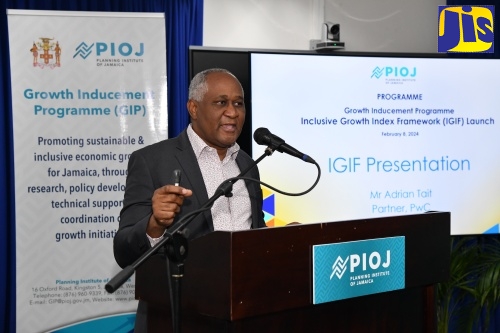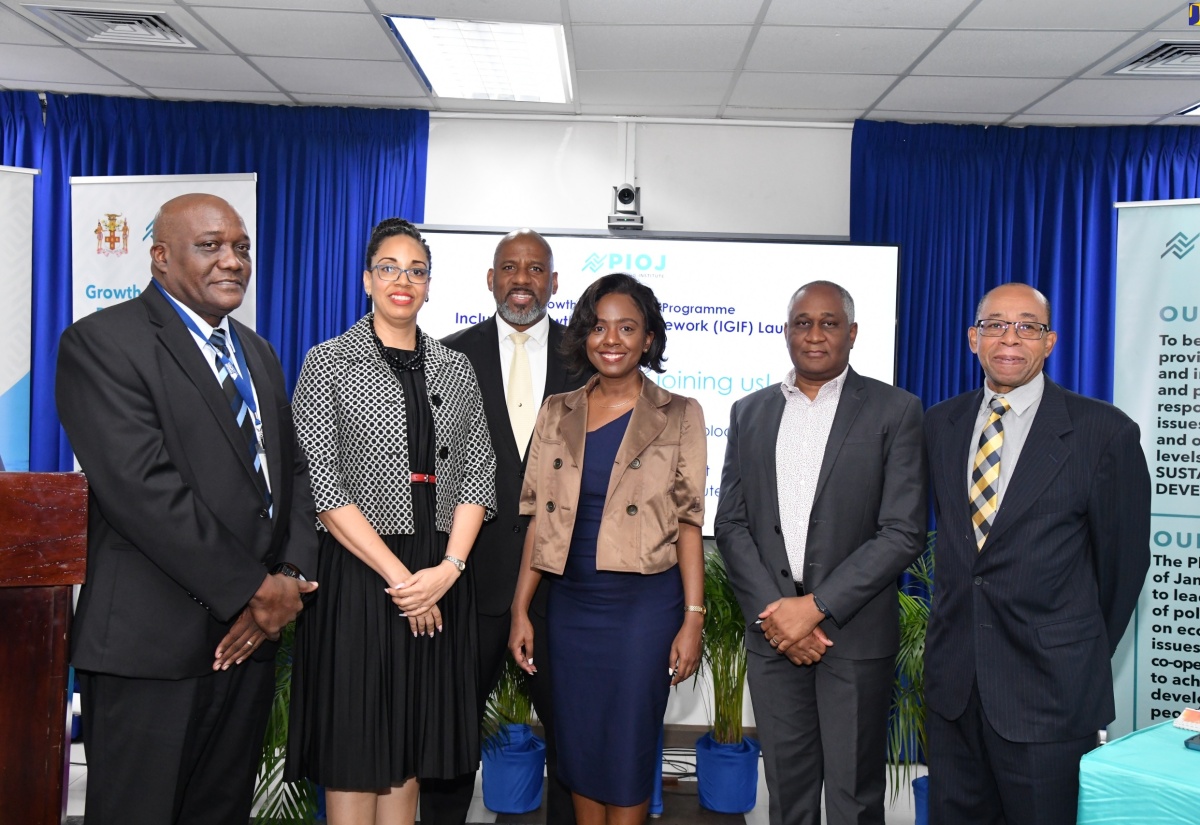PIOJ’S IGIF Expected to Be a Game Changer
By: , February 19, 2024The Full Story
Groundbreaking, novel and a game changer are some of the words that have been used to describe the launch of the Planning Institute of Jamaica’s Inclusive Growth Index Framework (IGIF).
Developed over a six-year period, the IGIF is the first of its kind and was undertaken through funding from the World Bank via the Foundations for Competitiveness and Growth Project.
Director of the Growth Inducement Programme at the PIOJ, Laura Levy, explains that the IGIF will change how Jamaica maps its growth.
“The IGIF has the potential to transform Jamaica’s approach to development and inspire other countries along the path to inclusive and sustainable economic growth,” Ms. Levy says.
Key stakeholders and policymakers were consulted in the development of the tool, along with accessing a large number of data points, so that it is truly tailored to Jamaica.
“For buy-in, we built that into the development process. For many of the key stakeholders, they already know about it, they contributed to it, so we already have a certain level of buy-in,” Ms. Levy states.
“Obviously, we do want more going forward, especially as we’re going to be advocating for more data points, but we’ve already built that in, from day one, to the process, and it is key to the continuance of the whole index and its usage,” she adds.
The ‘what is in it for me factor’ is what makes the IGIF such a phenomenal tool, whose outputs, when used by policymakers, will redound to the benefit of all Jamaicans.
Economic Specialist at the PIOJ, Kellie-Ann Murray explains that the IGIF is comprised of seven pillars/sub-indices, which are, in turn, comprised of 44 outcome indicators.
“When it is used, it will give a birds-eye data-driven view of the economy that does not currently exist and is needed,” Ms. Murray says.
While gross domestic product (GDP) has usually been the main indicator for economic growth, the IGIF will provide a more in-depth analysis of a greater number of cross-cutting indicators that impact growth and the ‘why’ behind movement (or lack thereof) and interrelatedness in certain sectors.
The seven pillars which were used to derive the overall composite index or measurements, were identified after extensive and rigorous years of research, consultation, and analysis.
They are Environmental Quality, Health, Human Capital, Poverty Reduction, Safety and Security, Wealth, and Equity and Equality.
Partner at PricewaterhouseCoopers (PwC) and Engagement Leader of their team that worked on developing the application, Adrian Tait, says what is special about the IGIF is that it will operate as a diagnostic tool.
For example, if the index shows that health improved for a particular period, the IGIF can identify why it improved and which other pillars contributed to the improvement, and whether investments in other pillars were beneficial to the pillar of health.
“The dialogue will move from the performance of the country beyond just a single number or a single measure growth. It is going to improve the conversation around how well or how badly we have done… why did this happen, and what’s the relationship between all these different variables in the economy and how can we pull levers to have an impact going forward,” Mr. Tait says.

Renowned development expert and Adjunct Professor in Economics, Climate Change and Renewable Energy at the University of Technology, Dr. Wesley Hughes, says the IGIF can guide policymakers in identifying areas that require attention.
“It’s a diagnostic tool leading to more targeted and effective intervention. It impacts everybody, the public, academia, private sector, trade unions, and other groups in the society. We’ll have a better appreciation of where we’re making progress, how we’re changing and evolving over time,” he states.
He notes that the PIOJ should be commended for developing such a tool, as the overall methodology used condenses a lot of complex information into a single numerical or category value.
“We are competitive, and Jamaica can also benchmark our performance on the IGIF with other countries in the region. You can use this tool for comparative analysis. It allows us to identify strengths, weaknesses; it enables comparison across different entities such as countries, regions, even organizations,” Dr. Hughes explains.

The IGIF will also be used as a means of attracting investment in the country.
“A favourable investment ranking on the IGIF could enhance the attractiveness of how people see the country, both international investors, international agencies and citizens within the country; how they perceive the country to be going,” he notes.
Indicators that gauge a country’s stability and governance and other factors influencing investment decisions are also embedded in the IGIF.
Dr. Hughes states that the Government will be better able to make efficient use of limited resources by targeting specified areas.
“With a clear understanding of our development strengths and weaknesses, the IGIF can aid us to optimise resource allocation. This allows for more efficient use of limited resources. It can allow us to focus on areas that have the highest impact on sustainable development and inclusivity,” Dr. Hughes adds.
In the meantime, PIOJ’s Senior Director, Economic Planning and Research Division, James Stewart, says that once operationalised, the PIOJ is committed to integrating the IGIF’s insights into various facets of its work.
“The IGIF can contribute to citizens’ awareness about where we are, but also [be used to] engage them in discussions,” he adds.
“The intention is that it will feature in our flagship publication, the Economic and Social Survey of Jamaica,” Mr. Stewart says.
Additionally, it will be used in the PIOJ’s quarterly press briefings.
“Annual updates of the IGIF findings will be shared at our quarterly press briefings, ensuring transparency and accessibility. We intend to start the awareness this year in 2024 and we target to start sharing the results commencing in 2025,” Mr Stewart says.
The IGIF aligns with Jamaica’s Sustainable Development Goals and Vision 2030 Plan, and as such, it will be an effective tool for inclusive growth.


